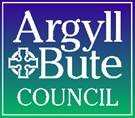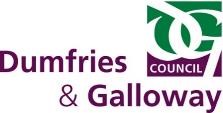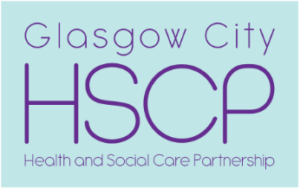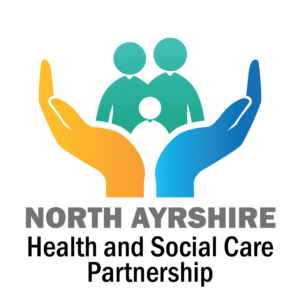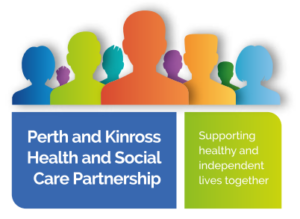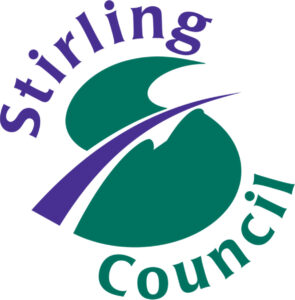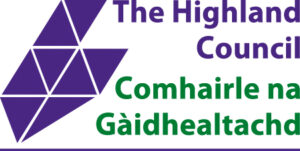Submission From Social Work Scotland, To Education And Skills Committee Call For Views
02.10.2020
Social Work Scotland is the professional body for social work leaders, working closely with our partners to shape policy and practice, and improve the quality and experience of social services. We have engaged closely with the Scottish Government and local government partners in the development of the Redress for Survivors (Historical Child Abuse in Care) (Scotland) Bill, setting out our position on key matters in response to the pre-legislative consultation (November 2019).[1]
Our response to the Committee’s call for views has been developed by Social Work Scotland’s national Historical Abuse Practice Network (which supports professionals involved in supporting survivors’ applications for records and redress) and Social Work Scotland’s Children and Families Standing Committee (senior managers in social work services). In response to the Education and Skills Committee’s questions:
1. The people who are eligible to apply to the scheme.
We agree with the proposed criteria for those eligible to apply, but note that Scottish Ministers will have the power by way of regulations (subject to the Scottish Parliament’s approval by affirmative procedure) to adjust the definition of “relevant care setting”. This would be by adding to or varying the descriptions of types of the residential institutions listed in section 18(3), or by modifying the detailed descriptions of each type of residential institution provided for in section 19.
The power to modify the definition of “relevant care setting” is said to be based on experience gained through the advance redress payment scheme, which has shown that additional types of care setting may come to light once the scheme is operational (paragraph 85 of the Policy Memorandum). On this basis the power seems pragmatic, providing potential flexibility in the scheme as we progress through installation and implementation. However, in view of the complexity of the care system and individual’s experiences, it is reasonable to assume that cases will present challenges to the current definition, and pressure for revisions. While we do not necessarily oppose future adjustment, the consequences for both the management and costs of the scheme may be considerable, and any such step must be fully consulted on (with all organisations and people affected) and properly scrutinised by Parliament. Indeed it may be desirable now, at this early stage of the Bill, for the Scottish Government to provide some examples of the possible additional types of care setting which they predict may emerge, to ensure a full and detailed debate over how they should be treated.
2. The Bill’s definition of abuse
We agree with the Scottish Government’s intent to base the definition of “abuse” on that as set out in the Limitation (Childhood Abuse) (Scotland) Act 2017 (“the 2017 Act”). The broad definition provides a flexible and proportionate approach, focussing on the experience of the survivor, rather than making a judgement that any form of abuse is, in and of itself, more severe than another. Recognition that abuse takes a variety of forms, and that all have to damage, long-term impacts must be respected. Each case must be evaluated independently, against the agreed assessment criteria.
3. The dates used in the Bill to define ‘historical abuse’
The dates used to define historical abuse, as that which took place before 1 December 2004, is appropriate. In opening up the scheme to those where the abuse took place before 26 September 1964, it will be demonstrably more inclusive than existing remedies.
4. The Bill’s definition of ‘in care’ and the places in which that care took place.
There is no definition of “in care” within the bill. Therefore, it is understood that this question relates to the definition of “relevant care setting” as defined in sections 18 to 20. We have no specific issues with the two categories of care setting described; firstly, a residential institution in which the day to day care of children was provided by or on behalf of a person other than a parent or guardian of the child, and secondly, a place, other than a residential institution, in which a child resided while being boarded-out or fostered. We are also content with the definition of “residential institution” to mean a children’s home, a penal institution, a residential care facility, school-related accommodation, and secure accommodation.
However, in our response to the pre-legislative consultation, we expressed unease about the exclusion of children who were in the care of medical professionals but for whom parents retained long-term responsibility for them. We noted that this “risks denying many individuals the right to redress for abuse suffered while in the care and protection of the NHS. It also insulates the NHS from appropriate accountability around how it fulfilled its responsibilities to the children in its care. […]The primary consideration in determining eligibility should be whether the state had a significant role or power in determining the placement of the child, and when the child was in that placement, had responsibilities for their care and protection.”We have engaged with the Scottish Government on this point, and appreciate the complexity, and potential financial challenge, of including such situations in the statutory scheme. But we take this opportunity again here to stress that, as with some individuals who were placed in boarding schools for reasons other than simply parental choice, the Redress Scheme is likely to seem unfair. Moreover, as currently constructed the Redress Scheme situates the failures and responsibilities of the state with local authorities; as independent inquiries into historical abuse have consistently found, formal ‘in care’ settings are only part of the picture.
5. The process of applying for redress and what advice and support applicants might need, particularly in relation to the waiver scheme.
The process of applying for redress, and the advice and support provided to applicants, must be considered beyond the relationship with the Financial Redress Team alone. The scheme’s intention is to give survivors more, not less, choices as to how to pursue financial reparation. Accessible, independent legal advice is critical, as the introduction of the redress scheme does not, in itself, replace existing avenues of financial reparation. Civil litigation will remain an option, and in some cases may lead to higher settlements and a more definitive sense of closure/redress. However, survivors must be supported to understand these options fully, including the likely legal fees levied on a successful civil claim, and the nature of what is an explicitly litigious process. In our view, it is a considerable unknown around the Bill whether there will be a substantial increase in legal fees once the scheme is live.
For the waiver to operate effectively, it must clearly and specifically outline the period, people and organisations, and instances of abuse for which the survivor is accepting the redress payment. It is crucial that survivors have independent legal advice at this stage in order to make a fully informed decision.
Subject Access Requests will be critical to the process; in many cases provision of information to the redress scheme can only be met by invoking this right. The significant resources will be required by public authorities to fulfil their obligations to the statutory requests for personal information which the redress scheme will provoke. Comprehensive consideration must be given to how organisations covered by Subject Access Request duty are supported to undertake the work. Local Authorities increasingly experience demand outweighing resources. We strongly urge the Scottish Government, in the interests of applicants to the scheme, to fully fund public authorities in the delivery of this function. A constructive conversation has begun with the Scottish Government on this matter, and we hope over the course of scrutiny of the Bill that our members can be reassured that demand created by the Act will be met by appropriate investment.
Inclusive to the process of applying, at point of entry to the scheme survivors must be offered counselling and support services. The impact of the redress process including accessing records, living through the redress process itself and re-living abusive experiences cannot be understated. A significant risk to survivors is being re-traumatised through this journey. Counsellors, social workers and support workers will be critical to supporting individuals through this process safely. Further detail on this critical provision, including how it will be resourced, would be welcome in Bill’s accompanying documents.
6. The level of payments offered to survivors.
We are broadly content with the levels of payments offered to survivors. Arguments may be made for higher or lower levels of payment, but we are satisfied that the Scottish Government has balanced the various factors in its calculation.
7. What you believe to be a ‘fair and meaningful contribution to the scheme from organisations responsible for abuse
The details of this contribution, including the amount, structure, and timeframe, are not specified in the Bill or its accompanying documents. A key area of concern is the unknown quantum of the contribution. While it is assumed to be a significant proportion of the costs of redress payments as set out in the Financial Memorandum (£350m), there are various unknowns that will determine the total payments which will be made and, in turn, the extent of the financial contribution from organisations responsible for the abuse.
We are aware conversations between the Scottish Government and COSLA are ongoing, and a collective response from the local government will emerge. The priority for Social Work Scotland is on the operation of the scheme itself, the support available to applicants, and the impact on social work departments. But from discussions among our members, a preferred approach to securing a “fair and meaningful contribution” was for SG to fund the entirety of the scheme in the first instance, with individual local authority contributions assessed on the profile of claims and liabilities of the former regional councils. Where areas have higher numbers of successful claims, clarity on equal or variance of contribution would need to be confirmed. Other members pointed to models such as the CNORIS (NHS) scheme, whereby costs are apportioned according to the losses by region. There is an annual actuarial review to assess the contributions made by each NHS board. However, we do recognise that such approaches would create a level of uncertainty for each local authority, which may not viable in terms of budgetary planning.
Indeed, bearing in mind the financial position that COVID has left authorities, we do think it is important that, whatever mechanism is agreed, phased payment of contributions will be necessary, to avoid a negative impact on services available to the public.
The civil litigation risks also cannot be understated or excluded from consideration. Whilst the redress scheme may award up to £80,000, there may be cases where the survivor has been advised by an independent legal advisor that their claim may result in a higher settlement through civil action. There may be a substantial increase in civil claims, with the associated increase in legal fees and compensation awards. All such cases would fall out outwith the Redress scheme’s scope and the calculation of ‘fair and meaningful contributions.
8. The process for dealing with applications to the scheme from people who have serious convictions.
We agree with the process proposed for dealing with applications to the scheme from people who have serious convictions, on the basis that a public interest/human rights-based approach will be adopted.
9. The process for family members to make an application on behalf of a survivor who has since died.
We agree with the process for family members to make applications to the scheme, as a ‘next of kin’ payment.
10. How to ensure that non-financial redress (e.g., an apology) meets the needs of survivors.
It is noted that the bill says very little about the apology. An apology is referred to once in section 91, regarding reporting requirements. A public apology is, without doubt, a key aspect of non–financial redress and Scottish Ministers should continue to publicly acknowledge survivors’ experiences. Survivors should be consulted on how non-financial redress should look and feel for them, and further detail should be provided by the Scottish Government on how priorities will be met. Social Work Scotland looks forward to working with Scottish Government and other partners on these aspects.
For further information, please do not hesitate to contact:
Ben Farrugia
Director, Social Work Scotland
ben.farrugia@socialworkscotland.org



